1. Peanut Butter
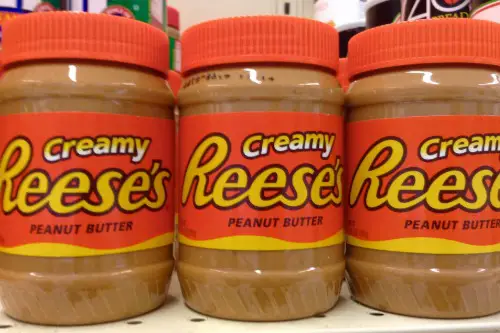
Peanut butter is a beloved American food staple that’s often bought in bulk, especially in households with kids, according to Natalie Rice from CNBC. It’s seen as a cheap, easy, and nutritious snack that pairs well with bread, fruit, or crackers. Many families buy the giant jars because they get so much use out of it, whether for sandwiches, smoothies, or baking. The American love for peanut butter is unparalleled, and the larger the jar, the better the savings.
In other parts of the world, peanut butter isn’t as widely consumed as it is in the U.S. It’s often considered an exotic or niche product, and the idea of buying it in massive jars doesn’t really cross people’s minds. Countries that don’t have a large peanut production industry don’t rely on peanut butter in the same way, making it a more occasional purchase than a pantry staple. Americans, on the other hand, love their peanut butter in all forms and quantities.
2. Bottled Water

Bottled water is one of those quintessential American items that are often purchased in bulk, especially during hot summer months or for large events. Whether it’s a 24-pack or even larger, Americans often stock up to ensure they stay hydrated, according to Shannon Palus from Slate. The convenience of bottled water means it’s easy to grab on the go, making it a preferred option for outdoor activities, road trips, and sports events. For families, it also seems easier to just buy a big case than to worry about constantly refilling water bottles.
In many other countries, tap water is either safe to drink or is more widely available, making bottled water less of a necessity. Countries like most of Europe or parts of Asia have extensive water filtration systems that make bottled water less desirable. The environmental impact of plastic waste also makes bottled water a less common purchase in those regions. In the U.S., however, convenience and the culture of buying in bulk often trump environmental concerns, resulting in massive sales of bottled water.
3. Frozen Meat
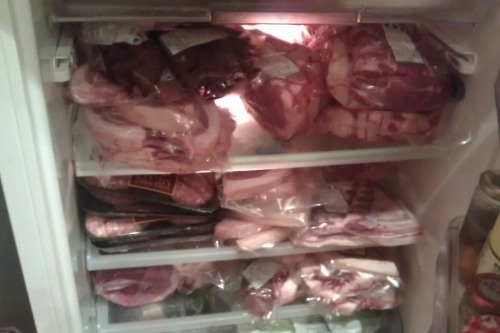
Frozen meat is often bought in bulk in the U.S. to save money and ensure there’s always a supply on hand, according to Sam Worley from Epicurious. Large packages of frozen chicken breasts, ground beef, or even steak are common purchases in American households. Freezing meat ensures that it doesn’t go bad quickly, making it an ideal solution for busy families who don’t have time to shop often. It also allows for meal planning in advance, with a variety of meats available whenever they’re needed.
In other parts of the world, fresh meat is preferred and typically bought in smaller quantities. Countries with strong local butcher traditions often focus on buying meat that’s prepared and sold in smaller portions. The reliance on frozen meat in the U.S. reflects the convenience culture and a desire to always have dinner options ready to go. It’s a bulk-buying habit that is largely driven by practicality and storage space, but it’s not as common in other cultures where fresh, local ingredients are prioritized.
4. Toilet Paper

Americans have a unique obsession with buying toilet paper in bulk, especially at big-box stores like Costco or Sam’s Club. The average American household can go through several rolls per week, and bulk buying ensures they never run out. It’s not uncommon for families to stockpile enough toilet paper to last for months, especially when there’s a sale. The appeal is clear: fewer trips to the store and the potential for massive savings when buying in large quantities.
In many other countries, people tend to purchase toilet paper in smaller, more manageable quantities. It’s not a product that’s seen as necessary to stockpile, and the cost of a single pack is usually more affordable than in the U.S. Americans, however, often buy bulk to take advantage of bulk discounts or just for peace of mind, according to Chris Isidore from CNN. It’s become such a cultural habit that large packs of toilet paper are almost a symbol of convenience and preparedness.
5. Cereal
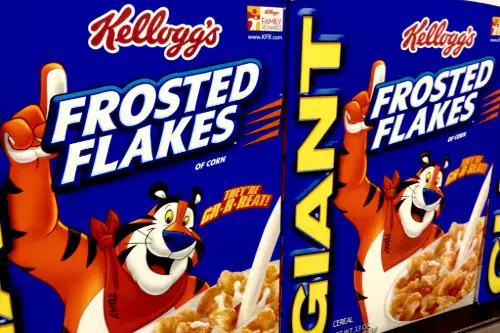
In the U.S., buying cereal in bulk is a staple for many families, especially for those with children, according to Rachel Martin’s NPR article. Big, multi-box packages of cereal are a common sight in American kitchens, and it’s often a budget-friendly way to keep the breakfast routine stocked. Buying large quantities means fewer shopping trips, which is an appealing convenience for busy households. Plus, cereal is typically inexpensive, so families don’t mind having a mountain of boxes sitting around.
In contrast, many other countries don’t have the same cereal culture. Breakfast items can range from toast and eggs to yogurt and fruit, with cereal being less of a go-to staple. The larger American portion sizes and marketing geared toward bulk buying cereal often make this a unique shopping habit. It’s part of the American lifestyle to grab a box or two (or ten) of cereal, and it’s a practice that’s harder to find elsewhere.
6. Frozen Foods
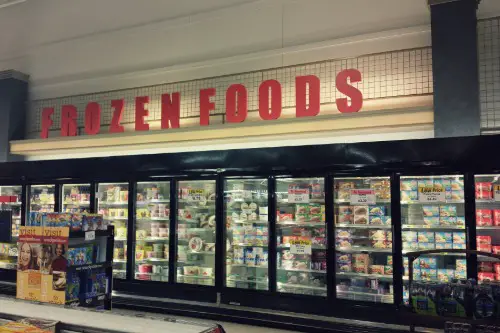
Frozen foods, especially things like frozen pizzas, vegetables, and ready-to-eat meals, are commonly purchased in bulk in American households. The convenience factor is a big reason for this trend—busy families can simply heat up a meal or side dish with minimal effort. Additionally, Americans love the idea of stocking up during sales, particularly on frozen items that can last for months. It’s a practical way to ensure you always have something quick and easy on hand.
In contrast, many other cultures prefer to buy fresh ingredients daily, with frozen meals being less of a staple. In countries like Italy or France, fresh ingredients are often valued over processed, pre-made meals. Frozen foods may be seen as convenient in certain situations, but they don’t hold the same cultural significance as they do in the U.S. Bulk purchasing of frozen foods, while common in America, just isn’t a widespread habit elsewhere.
7. Laundry Detergent
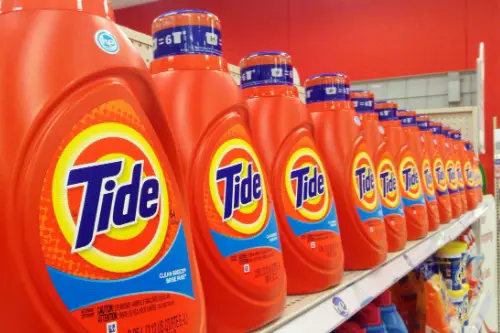
Americans are known for buying laundry detergent in massive amounts, whether it’s liquid, powder, or pods. In the U.S., it’s typical to purchase detergent in large bottles or bulk packs that last for months, especially if it’s a family household. The appeal lies in the cost savings and the convenience of not needing to make frequent trips to the store for something that’s used so often. Bulk buying also helps avoid the hassle of running out of detergent when laundry piles up.
In many countries, the laundry detergent market doesn’t encourage bulk purchases in the same way. Smaller quantities are the norm, partly because households in some regions don’t do laundry as frequently or may use alternative methods. Countries with smaller living spaces or less storage also don’t have the room to store huge amounts of detergent. While Americans may see buying in bulk as a money-saving move, it’s not the standard in other parts of the world.
8. Condiments
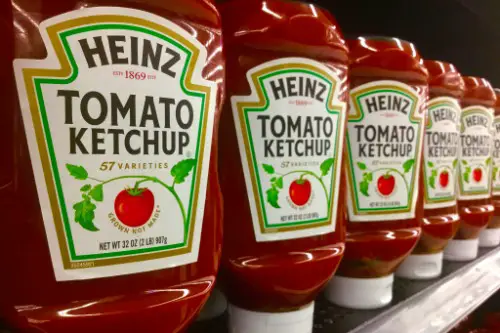
From ketchup and mustard to mayonnaise and salad dressing, Americans love to stock up on condiments in bulk. The rationale behind this is simple: condiments are used frequently, especially in households that grill often, entertain, or have children. Buying in bulk ensures that there’s always enough to go around for barbecues, sandwiches, or everyday meals. Whether it’s a giant bottle of ketchup or a multi-pack of mustard, these staples are often bought in large quantities to keep the family well-stocked.
Elsewhere, condiments are often purchased in smaller sizes or prepared fresh. In countries like France or Italy, for example, condiments like mustard or dressing are usually added in moderation, and people often prefer homemade versions. The American tendency to buy mass quantities of pre-made condiments is partly due to convenience, but it’s not as common in other culinary traditions where fresh ingredients take precedence. This bulk-buying habit is yet another example of American preference for convenience over smaller, more intentional purchases.
9. Spices
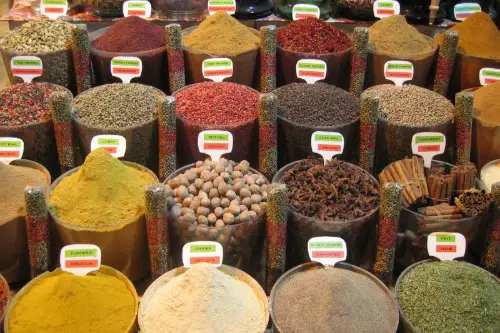
In the U.S., buying spices in bulk has become an increasingly popular practice, particularly for those who cook a lot or enjoy experimenting with different cuisines. Large jars or bulk bags of common spices like garlic powder, cinnamon, and chili powder are often found in American kitchens. This practice is particularly prevalent in communities with a high demand for diverse spices and seasonings for various ethnic dishes. Purchasing in bulk ensures that people always have what they need, and it’s often more economical in the long run.
In contrast, in other countries, spices are usually bought in smaller, more manageable quantities, as they’re used in moderation. For instance, in many parts of Europe or Asia, spices are bought fresh from markets and used quickly, making bulk purchases less practical. Additionally, the shelf life of spices is shorter in climates where they’re stored at room temperature, reducing the need to buy large quantities. Americans, however, often prefer to buy in bulk because they like to have an extensive spice collection ready for any dish.
10. Coffee

Americans often buy coffee in bulk, whether it’s ground, whole beans, or pods, because of the sheer volume of coffee consumed daily. Many American households can go through several pounds of coffee per month, especially in places where coffee culture is prevalent. Buying in bulk allows for savings, and it ensures that there’s always a fresh pot brewing in the morning. The appeal of mass coffee buying is partly due to the cultural significance of coffee in daily life and its association with productivity and socializing.
In many other countries, coffee is consumed in smaller amounts, often in more ceremonial or leisurely ways. Countries like Italy or Spain, for instance, may serve coffee in smaller portions, such as espresso shots, and rarely buy in large bulk. Coffee isn’t consumed as quickly in these places, and it’s often enjoyed in cafes rather than brewed at home. In the U.S., however, coffee is not only a daily ritual but also a point of convenience, leading to the preference for buying large quantities.
11. Soda
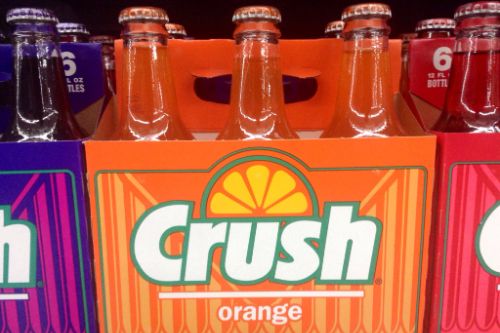
Soda, or “pop” as it’s known in some regions, is another item that Americans tend to purchase in large quantities. Large 12-packs or cases of soda are often found in American homes, especially for family gatherings or barbecues. The bulk purchase of soda comes down to affordability and convenience, as it’s cheaper per can or bottle when bought in bulk. For many, it’s a quick refreshment to have on hand, whether for everyday consumption or special occasions.
In other countries, soda consumption is generally more moderate. People in countries like France or Italy might drink soda occasionally, but it’s not as ubiquitous in everyday life. Soda in large quantities is often seen as a less healthy choice elsewhere, with an emphasis on water, fresh juices, or coffee. In the U.S., however, soda is a deeply ingrained part of the culture, and buying it in bulk is seen as a way to satisfy demand without constantly making trips to the store.
12. Meat

Buying meat in bulk is a common practice in many American households, especially for families who prefer to cook meals at home. Bulk purchases of chicken, beef, or pork are often made at warehouse stores or wholesale markets, where the prices are typically lower. Freezing the excess allows families to stock up and save money, all while ensuring they have enough protein for weeks or months. It’s also common for Americans to buy in bulk for special events like barbecues or holiday dinners.
In contrast, in many other countries, fresh meat is bought in smaller quantities and often prepared right away. Meat isn’t typically stored in large quantities, particularly in smaller living spaces where freezer space may be limited. In many cultures, there’s a greater emphasis on buying fresh produce daily and eating meat in smaller, more calculated portions. Bulk buying meat is much less common outside the U.S., where meals tend to be more centered around fresh ingredients and less about long-term storage.
13. Diapers
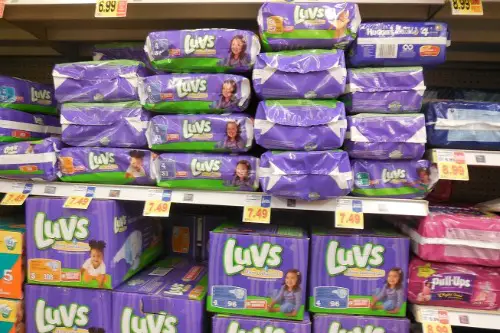
For American parents, bulk buying diapers is a must, especially when they have young children. The high cost of diapers makes it appealing to buy large quantities at once, particularly from warehouse stores that offer discounts. With babies going through multiple diaper changes a day, purchasing in bulk ensures that parents don’t run out and avoid the inconvenience of frequent trips to the store. The large packs or boxes of diapers are typically stored in spare rooms or basements, ready for when they’re needed.
In many other countries, diaper purchasing habits are different, often due to different cultural approaches to childcare or lifestyle. In parts of Europe, for example, cloth diapers are more common, reducing the need for bulk buying. Additionally, smaller families or different schedules can make diaper purchases more manageable, with parents opting for smaller quantities at a time. The American approach to bulk buying diapers is driven by convenience and cost-saving, but it’s not necessarily the norm elsewhere.
14. Paper Towels
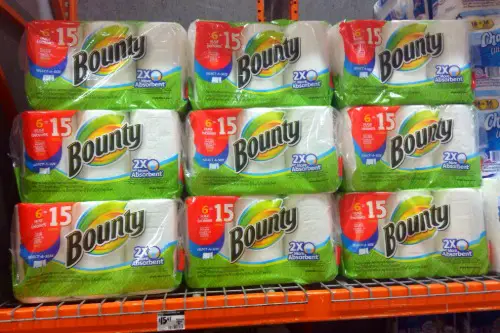
Americans are notorious for buying paper towels in enormous quantities, often to the point of using them as a multipurpose household tool. Paper towels are the go-to for cleaning up spills, wiping down counters, and handling various messes, which makes bulk buying seem practical. With large families or busy households, the convenience of having a whole cabinet stocked with paper towels is something many Americans prefer. The idea of buying in bulk ensures they always have enough, especially for those days when the messes seem endless.
In other countries, there’s less reliance on disposable paper towels, with many opting for reusable cloths or sponges instead. The concept of constantly buying paper towels in bulk is more of an American habit due to the larger sizes of American households and the cultural preference for disposable goods. The environmental concerns around single-use items like paper towels are also more pronounced in countries outside the U.S., where reusable options are more common. In the U.S., though, the convenience of a paper towel roll is tough to beat.


